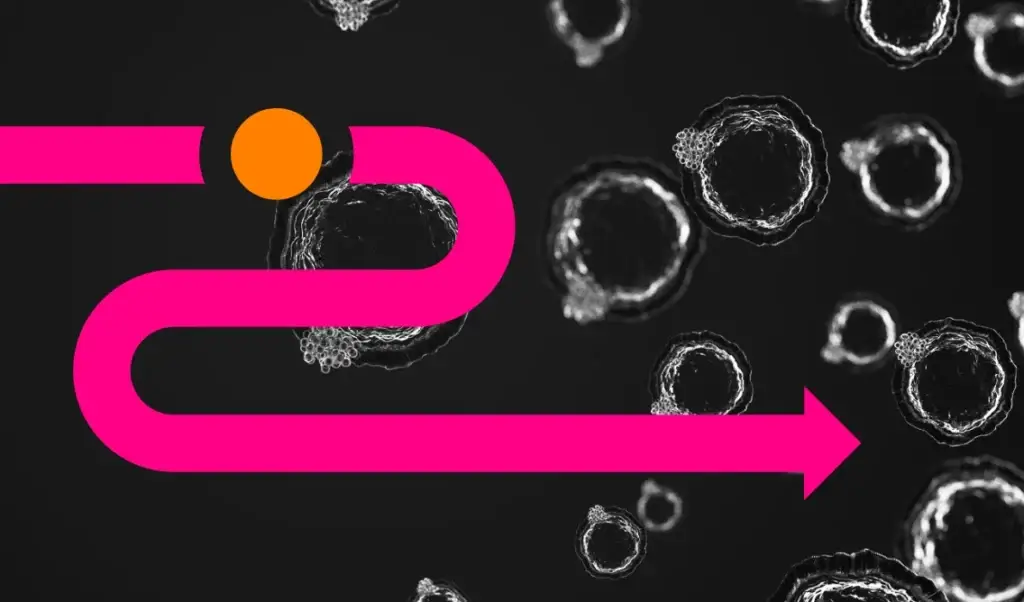AI in biotech is leading to unimagined approaches to improving human health
Written by:
Date:

Artificial intelligence (AI) is all the rage today. It’s also one of the biggest sources of concern for the American public. A recent Pew Research Center survey found the number of Americans who expressed more concern than excitement over the use of AI in daily life rose from 37 percent to 52 percent between 2021 and 2023. It’s often difficult for people to see the promise in new technology, believing it will change what it means to be human. Even Johannes Gutenberg got his fair share of grief over the invention of the printing press.
AI’s introduction on the world stage hasn’t been without its stumbles and concerns, but its potential to drive new insights, innovations and human knowledge cannot be denied. In the biotech world, the possibilities are seemingly limitless, as we see therapeutic companies begin to leverage AI and machine learning (ML) to search for cures to our most challenging diseases. Yet, as exciting as that may be, some of the most intriguing and innovative uses of AI are found in more esoteric applications within biotech. Here we profile a few of our favorite out-of-the-box uses of AI in the biotech world.
Genesis Therapeutics
Drug discovery is daunting for many reasons, not the least of which is the inception of the process, when teams are trying to decide where to begin and which molecular entities to start with. Named a “Fierce 15” company of 2023 by Fierce Medtech, Genesis Therapeutics is taking the drug discovery challenge at full speed with its AI platform for small-molecule, structure-based design. Known as Genesis Exploration of Molecular Space (GEMS), the platform employs generative and predictive AI to design de novo drug-like molecular candidates for difficult-to-treat or previously undruggable targets.
GEMS takes a physics-based approach to molecular design – by analyzing the structure and binding characteristics of the target protein. The platform generates billions of drug-like molecules and then rapidly predicts their critical characteristics, such as selectivity, potency, and various properties of toxicity and pharmacodynamics. Leveraging chemically informed AI models, GEMS is able to explore and computationally test a massive molecular space and holds enormous potential for vastly expanding the number of high-impact drug candidates that can be developed, and the number of challenging or previously unapproachable diseases that can eventually be treated.
Intrepid Labs
Despite the massive leaps we’ve made in science, technology and our understanding of the human body, 90 percent of drugs fail during clinical trials. Several biochemical and physiological explanations for this failure rate have been posited. But, one often overlooked possibility is suboptimal pharmaceutical formulations. Intrepid Labs has combined predictive AI modeling approaches with digital automation and robotic systems to produce Valiant, a platform that can expand the number of experimental pharmaceutical formulations from hundreds to tens of thousands, and test those formulations in weeks instead of years.
Often developed between Phase I and Phase III of clinical studies, pharmaceutical formulation combines the active drug ingredient with other chemical substances, known as excipients, to arrive at the final form of the drug that is administered to the patient. It can be anything from a tablet or capsule to an injectable or inhalable form, and everything in between.
Formulation can have significant effects on drug pharmacokinetics, and Intrepid Labs’ Valiant platform is able to test and optimize a significantly larger collection of experimental variations on pharmaceutical formulations than can be evaluated using traditional formulation assay protocols. This ability to capitalize on a vastly expanded experimentation and optimization space has already been able to demonstrate dramatic increases in drug efficacy due to improvements in pharmaceutical formulation.
The company’s approach has the potential to increase the number of lead candidates that successfully navigate clinical trials, as well as improve the efficacy of some existing medicines. There is even the potential to expand access for some drugs to other patient populations, for example, making some medicines more tolerable for pediatric patients.
Imagene AI
Winners of the 2023 Digital Health Award for “Best use of AI,” Imagene AI is combining AI, biology, software engineering, and medical domain expertise to create real-time, biomarker-based predictive and prognostic imaging tools for the oncology sector. Biomarker testing faces severe limitations under the current oncology standard of care. There is often not enough tissue from solid tumor biopsies to collect information on all available testable biomarkers, and retesting is difficult to achieve and burdensome on the patient. The process is costly and time consuming, often involving multiple laboratory techniques. And, even under the best circumstances involving next-generation sequencing platforms, biomarker testing is limited by the availability of the technology and the expertise to run it.
Imagene AI has developed AI-based imaging that uses only tissue slides or digital images with conventional contrasts, such as H&E staining, to predict diagnosis or prognosis. Its systems are trained on real patient sample images with confirmed diagnoses and biomarker status using multiple-instance learning algorithms and dynamic data augmentation. Once trained, Imagene’s systems have shown remarkably high concordance with charted samples, with accuracy rates of up to 92 percent. Further, the company’s systems achieve biomarker profiling results in minutes, compared to weeks using standard-of-care biomarker testing.
Recent research has demonstrated the critical need to begin biomarker-directed oncology treatment early upon patient diagnosis. With that in mind, the potential for AI-driven biomarker results in minutes versus weeks using Imagene’s diagnostic-prognostic platform is extremely exciting and hopeful, as patients can now imagine the possibility of leaving their oncologist’s office with a treatment plan already in place after the first biopsy visit.
Arpeggio Biosciences
Arpeggio Biosciences is developing one of the most exciting AI-based approaches to drug discovery ever imagined. In this age of omics-based approaches to biotech innovation, Arpeggio is leveraging transcriptomics to take a networks-based approach to overcoming the complexity of diseases. Using highly trained generative AI, the company is matching RNA fingerprints in disease transcriptomes — what Arpeggio terms disease barcodes — with chemotranscriptomes associated with novel drug compounds.
Using AI-based analytics to pair up disease and chemical transcriptomes, Arpeggio is able to potentially match novel drug compounds to diseases through relationships simultaneously based on molecular structure and biochemical activity. The process might be best described as an active-disease approach to drug discovery, instead of the traditional approach of characterizing static states of a disease, with subsequent drug design based on those snapshot parameters. The Boulder, Colorado-based company is still in its first years of innovation. But its approach holds a great amount of promise for the future of drug discovery.
The more AI learns the more we grow as researchers
Perhaps those lofty minds that have pioneered and developed AI and its various attendant technologies and scientific disciplines saw this coming. But, it’s hard not to be caught off guard by the ways AI has changed patterns of thinking and innovation in research, in general, and biotech, more specifically. Properly implemented and used, AI should, for example, enable us to dispense with the tedious and repetitive, give us more data than we ever imagined, and then provide us with plenty of time to conceptualize how to apply it to solving the most challenging puzzles in human health. It’s easy to see how that’s coming to fruition in the various approaches outlined above.
Moreover, it’s exciting to see how AI-based computational and predictive technologies are helping us synthesize previously disparate approaches to characterizing diseases, molecular candidates, human health status and more into unified overviews of human physiology in action. This is how AI was meant to be used: to help fill in the picture of what it means to be human, and use that to solve the most challenging problems in human health.
You may also like
All rights reserved Privacy Policy






